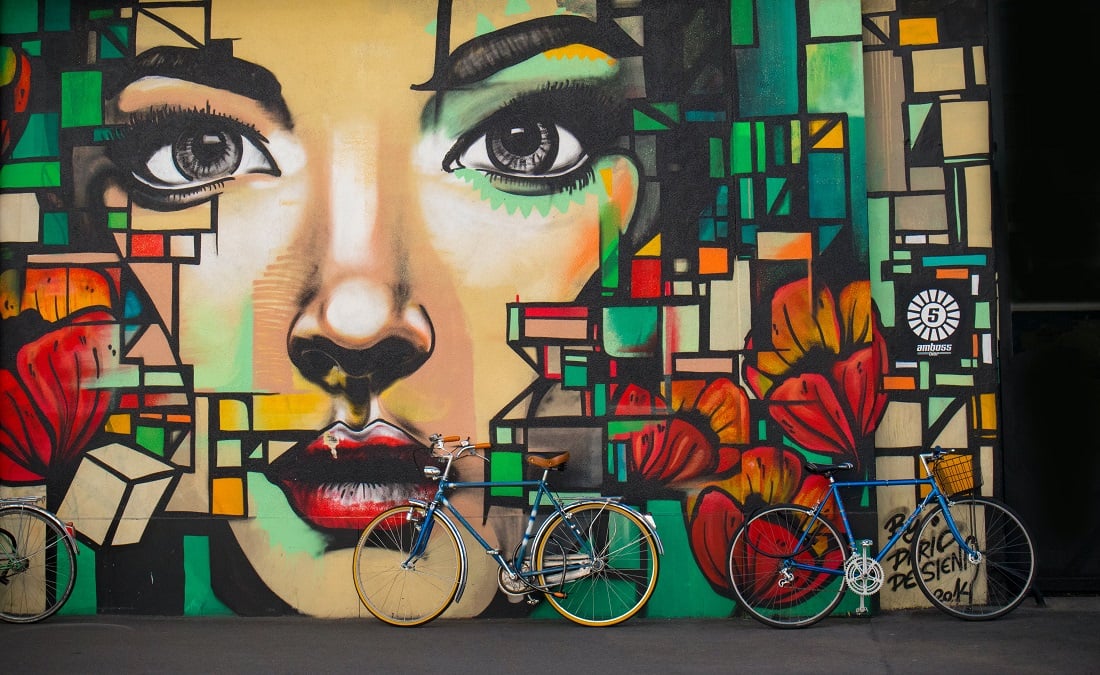
Photo: Timon Klauser on Unsplash
Getting copyright right
Big brands and advertisers are cottoning on to the marketing potential of street art. What does that mean for the artists? Timothy Watkins unpacks the legal issues.
The drive for never-ending marketing content has encouraged brands and advertisers to use the streets to create promotional material that takes advantage of attractive and distinctive street art. This content is often posted on social media accounts which may be viewed by millions of people. For the artists behind the street art this often feels unfair. In some instances, copyright proceedings come about as a result.
But while the law may be in street artists’ favour, bringing claims against large brands and companies comes with challenges, including revealing one’s identity and, potentially, liability if the art was created on property without the consent of the owner. However, feelings about street art have changed over time. Once steadfastly anonymous, street artists can now enjoy wide acclaim for their works. As such, the unauthorised copying of street art by brands and advertisers may be coming to an end.
Copyright: a brief history
Copyright can protect a broad scope of artistic works, which can include paintings, photographs, graffiti, and sculptures – potentially anything that is an expression of an author’s own intellectual creation and fixed in a clear and defined form.
Copyright of an artistic work is infringed where a third party, without authorisation, copies the whole or a substantial part of the work. Copying can take place in many forms and includes photographing or filming the work as well as publishing the photograph in print or on the Internet or social media, or broadcasting or streaming the film. If copyright is infringed, the owner of the copyright can sue for an injunction to prevent use of the copied work, as well as damages (which are usually calculated by way of a reasonable licence fee) or an profits from whoever infringed the work.
A recent case involved the artist Ai Weiwei. He brought copyright proceedings against carmaker Volkswagen which, without authorisation, included a photograph of one of Ai Weiwei’s installations in a marketing campaign. The artwork in question was called “Soleil Levant”, which displayed more than 3,500 life jackets collected from refugees and migrants who had landed on the Greek island of Lesbos. These life jackets were collected by the artist and installed outside of the Charlottenborg Palace in Copenhagen as part of World Refugee Day. The artwork was in place from June to October 2017.
In October 2017, Volkswagen’s Danish subsidiary took a photograph of its new Polo model parked in front of the Charlottenborg Palace, capturing parts of Ai Weiwei’s work. This photograph was then published on Volkswagen’s website and social media to promote the car. The photograph received something in the region of 200,000 views. Volkswagen did not credit the name of the artwork or the artist himself. Ai Weiwei commenced proceedings against Volkswagen in Denmark in 2019 on grounds that the photograph infringed his copyright. He was successful in his claim and received damages from Volkswagen.
Cases have commenced in other countries including the US and Sweden involving similar fact patterns, often where big automotive or clothing brands use marketing material incorporating street art without authorisation. In each case the artists alleged their copyright in the street art has been infringed.
Protecting your copyright
For artists in the UK, there are numerous steps that can be taken to protect street art at risk of being copied without authorisation. Firstly, when creating the work, keep clear and accurate records of the preparatory design and creation of the work in question to evidence your authorship and ownership of the work. Whether or not you can prove ownership is likely to be the first question asked if you do ever approach someone who has copied your street art. Consider taking a photograph or video of the work in question whilst it is being created.
Secondly, if you want others to know that the work in question is protected by copyright (and that you are mindful of your rights), include a copyright notice on the work – a © symbol, your name and the year of creation. Keep in mind that omitting a copyright notice from your work does not stop it from being protected by copyright, but it does cut across any arguments that those who copy your work didn’t know it was protected by copyright in the first place.
Thirdly, have an approach prepared for dealing with those who copy your works without authorisation. You could have a letter that sets out, with evidence, your ownership of the copyright. Consider what you want to happen in the case of copyright infringement: would you be happy with a credit (if one is not given), or would you want the copy of your work taken down or removed? If you want payment of a licence fee, consider reviewing industry standard terms to see what the going rate would be for using similar works in marketing materials or on social media. Have a figure in mind that you would be prepared to accept.
Finally, keep in mind that there may be some push back from those who copy your work. If you are in any doubt as to whether someone has copied your artwork in a way which constitutes copyright infringement, be sure to get advice from an intellectual property lawyer.
Timothy Watkins is an associate at UK law firm Harbottle & Lewis, advising on all aspects of intellectual property IP law. He specialises in helping artists create, protect, leverage and enforce their IP rights.
![]() harbottle.com
harbottle.com
![]() @Harbottle_Lewis
@Harbottle_Lewis
Harbottle & Lewis is a leading UK-based law firm focussed on the Technology, Media and Entertainment sectors. Its clients come from all areas of the arts and cultural sector, including artists, theatres, authors, publishers, and designers.
Join the Discussion
You must be logged in to post a comment.